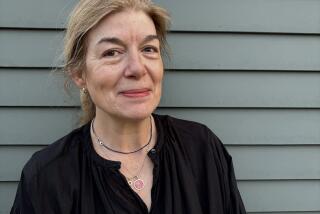City of Broken Dreams
Hidden in its blanket of industrial pollutants, Cairo at first glance is indistinguishable from other metropolises of the developing world. Versions of its decaying infrastructure, slipshod construction, impossible traffic and simmering tensions can be found in Mexico City, Bombay, Lagos and Jakarta, to name a few. But none of those places has Cairo’s history, a history that may be obscured by the modern megalopolis but that permeates still. Cairo’s human geography is the product of 5,000 years.
At the southwestern fringe of the city sits the ancient necropolis of Memphis, better known in the Western world as the pyramids. Ten miles to the east lies the Nile, and the new, tony districts of Mohandiseen and Doqqi with their office buildings and apartment towers. Across the river, a giant traffic circle called Midan Tahrir epitomizes 20th century Cairo, with the once-tony Hilton Hotel, the magnificent antiquities museum with King Tut’s treasures and the ugly, hulking Mogamma, a building that houses thousands of government offices.
Half a mile from Tahrir, heading east, elevated highways compete with the remnant of the 19th century city built by Khedive Ismail on the model of Hausmann’s Paris, and those in turn nestle the Cairo of the medieval Mamlukes and the Fatimids, Muslim dynasties that ruled Egypt and left walls and mosques and fortified gates. The eastern edge of the city is guarded by the Citadel, a series of military buildings, walls and mosques built on top of rocky cliffs several hundred feet high that were first fortified by the Kurdish prince Saladin in the 12th century.
To the north, concrete apartment blocks stretch for miles, and to the south, an enclave of 5th century Coptic churches gives way to factories that breathe fire and belch acrid fumes that hover near dusty graveyards dating back almost 1,000 years.
It is a bewildering place, apt to overwhelm and discourage: too many people, too much chaos. It helps to have a guide, or several, to offer glimpses into what isn’t immediately apparent.
The authors discussed here have their own concerns, their own struggles with the city. But they do leaven the experience of Cairo, and they do allow us to take a step back from the fray and make sense of it all. And they know how difficult that can be. As journalist and author Max Rodenbeck, a longtime resident, puts it, while you can wax poetic about “the city’s wonders,” it is just as easy to “mutter over its noise and pollution and sheer, bewildering, annoying clutter.”
The Nobel Prize-winning Egyptian author Naguib Mahfouz was already lamenting the city’s descent in the 1950s and 1960s. Most of his stories chart the spiritual toll of the changing infrastructure. In the recently published English translation of his novella “The Beggar,” the main character, Omar, is a prosperous lawyer who becomes emotionally numb and slowly goes mad. Mahfouz meant the tale as an allegory for Cairo after the heady glow of Nasserism faded in the 1960s. But the pictures he paints of the spiritual devastation of everyday life still resonate.
For Mahfouz, who did most of his writing decades ago, the cup was half empty and its contents evaporating rapidly. If your eye is on decay, the Cairo of 2001 confirms Mahfouz’s worst fears. For instance, the earthquake of 1992 did substantial damage to the medieval mosques and palaces, and the Egyptian government lacks the funds to undertake the renovations that these now require. In formerly quiet, grand areas, such as the riverside neighborhood of Garden City and the secluded enclaves of Zamalek island, squatters have moved into and built extra stories on top of buildings. Even at their grimmest, Mahfouz’s characters existed in a tight network of family relationships; today, even those networks are weakening in the face of collapsing buildings and anonymous apartment blocks. In the vacuum left by decaying communities and an indifferent and sometimes brutal government, fundamentalists have rushed to fill the void. They promise a better future at the hands of God and spin tales of a heavenly paradise to compensate for the earthly hell of endless poverty and defeated dreams.
But for all the challenges of modern Cairo, and for all the power of Mahfouz’s vision, it is too easy to lament decay. Things are bad, but things have always been bad. In the words of one character in Anglo-Egyptian novelist Ahdaf Soueif’s “A Map of Love”: “History, this is all nothing. Egypt has been here so long. It has seen many things. In the next millennium it will still be Egypt.”
But, ask Mahfouz and others, will it? Is the change of today the same as the change of yesterday? How can we tell when our pessimism about change is simply part of an age-old unease with the human condition and when it is an indication that we are doing ourselves serious harm?
The gift of Cairo is that it brings these questions to the fore and assaults us with them. It is wonderfully frustrating that no answers leap out. Andre Raymond, who traces the growth of Cairo from the founding of the garrison city of Fustat by the Muslim conqueror Amr ibn Al-As in the 7th century to the present, has a sanguine attitude. He celebrates the city even as he charts its many problems. His book, like all good history, puts the present in context. He reminds us that however dodgy it is to walk along Cairo’s streets in 2001, dodging people and animals, coping with intermittently unpleasant smells, the same walk 300 years ago would have been much worse.
As Raymond makes clear, until the late 19th century, those same streets were notoriously filthy and impossible to navigate. From time to time, some official would try to widen the streets or at least force residents to clean the mounds of debris and sewage that blocked the way. But such efforts were usually futile.So which picture do we pick? The dark or the light? Progress or decline? One of the protagonists of Soueif’s novel is a middle-aged woman named Amal. Educated, affluent, she contemplates leaving the city for her family’s land south along the Nile. In the end, she chooses to stay, even though the stores no longer wrap her fruit artfully in a paper bag, even though the noise and the dirt are sometimes overwhelming. She stays, and she revels in the beauty of everyday life, the young men and women listening to love songs on the radio, spending the twilight hours out on the street. She stays because she is still connected to her home, even in the midst of jarring changes that threaten at any moment to rip apart the filigree tissue that keeps the city functioning.
Perhaps that is the best any of us can do faced with the conundrum of Cairo: note the changes, allow our laments and respect that everywhere and at all times, beauty dances with ugliness. That does not mean resignation, but neither does it mean wearing rose-tinted glasses that imagine the past as full of virtues. Cairo in Arabic means “the victorious,” but however triumphantly named, it has never been an easy city; it has never been free of the scent of decline, and from the time of the pyramids, the ancient tombs of the pharaohs, it has been suffused with an aura of death. But it also teems with life, pulses with energy, and offers, as few places do, the pungent aroma of what it means to be alive.
(BEGIN TEXT OF INFOBOX / INFOGRAPHIC)
From “The Map of Love”
Ahdaf Soueif
... I yearned for Cairo ... for the feel of the dust gritty under my fingers as I trailed my hand along the iron railing, for the smell of salted fish that met you as you drew near to Fasakhani Abu el-Ela, for the sight of fruit piled high in symmetrical pyramids outside a green grocer’s shop and the twist of the brown paper bag in which you carry the fruit home, when I yearned even for the Khamaseen winds that make you cover your face against the dust and with bowed head hurry quickly home--it was only then that I understood how longing for a place can take you over so that you can do nothing but return, as I did, return and pick at the city, scraping together bits of the place you once knew.
More to Read
Sign up for Essential California
The most important California stories and recommendations in your inbox every morning.
You may occasionally receive promotional content from the Los Angeles Times.










